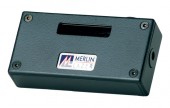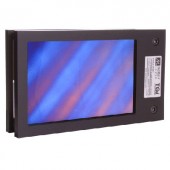MERLIN LOW-E Coating Detector
The Merlin Lazer Low E Coating Detector is ideal for:
- identifying Low-E Glass at the touch of a button
- checking Document L compliance
Low-E glass is a vital component of energy efficient windows. It has a virtually invisible coating which the tool is designed to detect. The Merlin Low-E Coating Detector is a duel purpose tester designed to detect Pilkington K-Glass and all other Low-Emissivity coatings on single and double glazed units and indicate on which surface it is present.
Simply place the tool onto the glass to be tested, if the tool detects the presence of a coating on the piece of glass an audible tone will be heard and the green indicator light will be illuminated. In this way installers and inspectors can verify the presence of the coating and the correct orientation of the unit.
Single Sheet Glass
During manufacturing it is important to know on which surface of the glass the Low-E coating is present. Simply place the two metallic sensors against the glass as shown below. Note: There is no need to press the red button as the sensors are self activated.
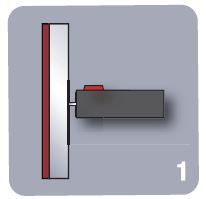 |
Single Sheet Glass - Position 1 |
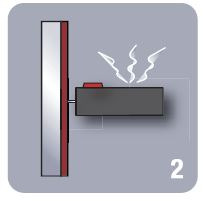 |
Double Glazed Unit
To check the presence of a low-E coating in a double glazed unit simply place the tool flat onto the glass as shown below and press the red button
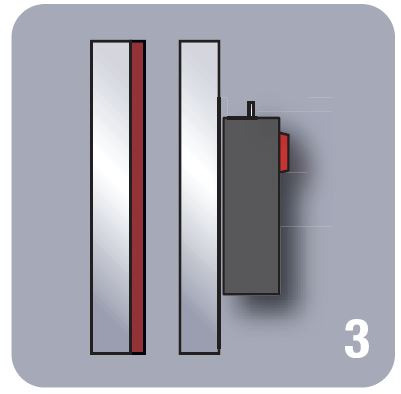 |
Double Glazed Units - Position 2 If the tool does not detect the presence of a low-e coating on the piece of glass that the tool is touching no audible tone will be emitted. If no tone is emitted simply repeat this procedure on the opposite side of the unit as shown below.(picture 3) If the tool detects the presence of a low-e coating on the piece of glass that the tool is touching an audible tone will be emitted to indicate this.(picture 4) |
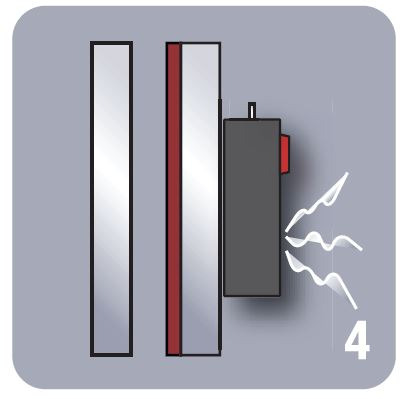 |
If you wish to check that a double glazed unit has been manufactured correctly and that the coating is correctly orientated towards the air-space simply follow the procedure to detect which piece of glass has the low-e coating as shown in picture 3&4 above.
Once you have done this simply touch the two metallic sensors against the glass as shown in picture 1&2. The Coating should always be facing towards the airspace and not exposed to the outside where it can become damaged, therefore no audible tone should be heard during this part of the test.
Related Products
Buy Now
Availability: Available: 1 - 3 days, Delivery time: 1 - 3 weeks, special order request







